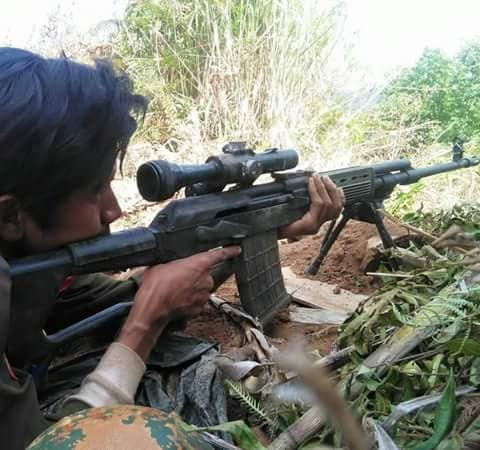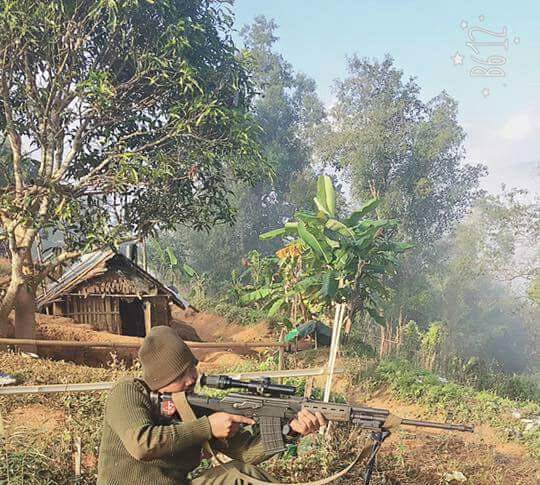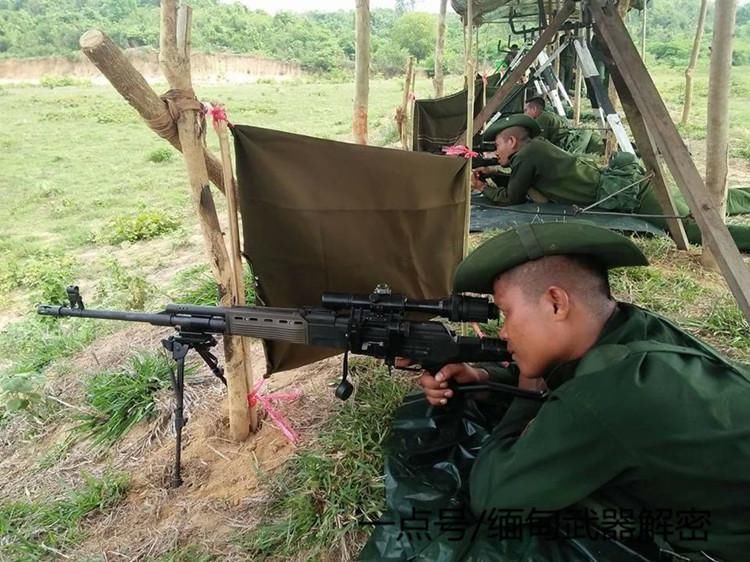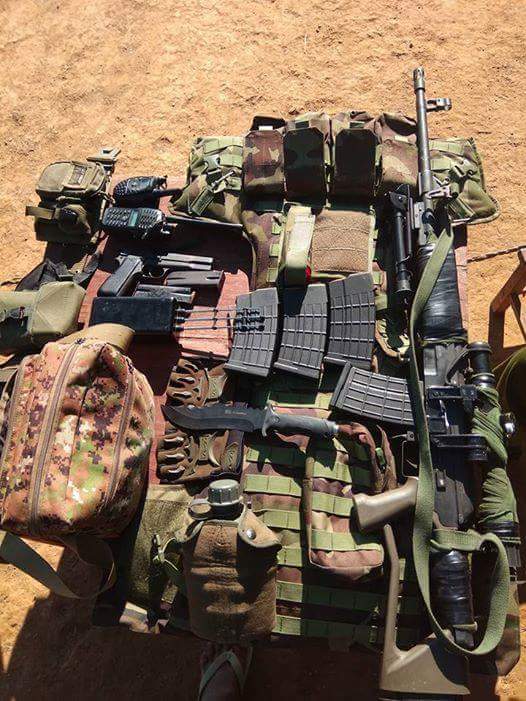In an earlier article on TFB, we covered the early efforts at producing a precision rifle for the Burmese Army, culminating in the MA-Sniper. In this article, we look at the production variant.
Finally, we get to the production MA-Sniper. Starting at least before 2013, possibly as early as 2011 or 2012 we see full production and adoption of a design based loosely on the earlier variant but also very different. The MA-S is still a Kalashnikov-based system, retains the gas tube mounted rear sight and disassembly tab but visually the biggest identifier is the stock and the hand guard. The stock is a lightening cut version made out of polymer with an empty space in the middle of it, essentially consisting of a grip, cheekpiece, buttplate and supporting strut. It is certainly adjustable for length of pull and has a cheekpiece that would appear to be adjustable for height with different combs that can be inserted but this hasn’t been seen. Bipods have been changed from simple struts that fold back to Harris-patterned derivatives (most likely not actually Harris versions from the States) that are mounted on a barrel attached Picatinny rail. Interestingly all of these bipods seen in available media are reverse-mounted so they fold towards the shooter, usually not a technique that Harris bipods are internationally known for. The other important point here is that the handguard has changed from the standard MA-series U-shaped brown piece with vents on all three sides to a dark green handguard with straight finger grooves and oval vents placed at the top near the gas tube. This handguard has also appeared on very recent variations of the MA-3 carbine (along with the Steyr-patterned magazine).
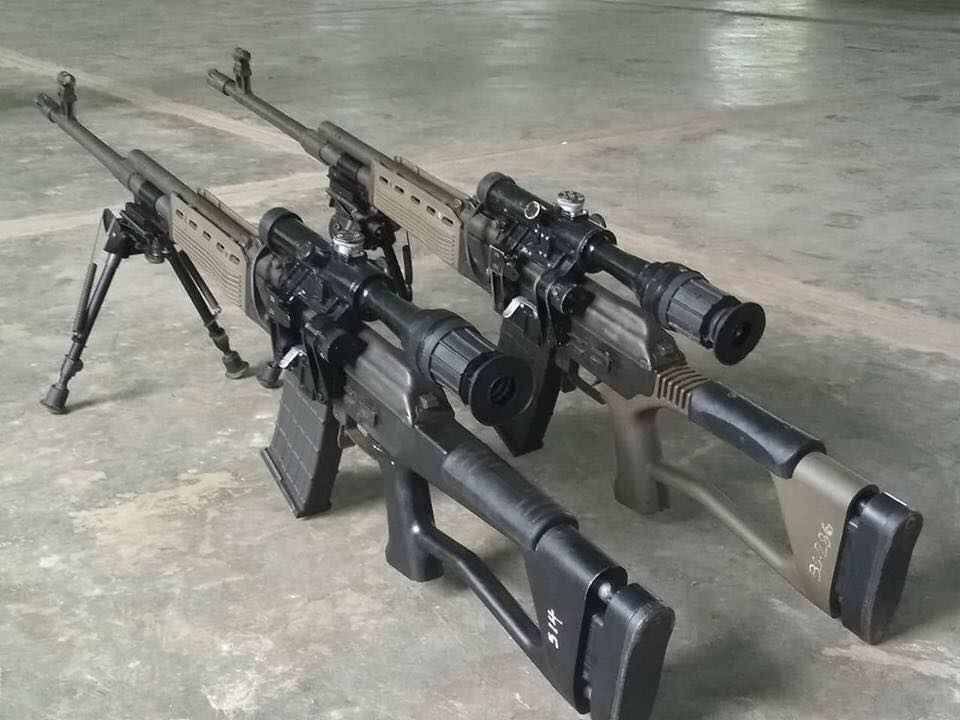
Note the different variants, with the black stock on the left and the green stock with lightning cuts on the right. From photo evidence, it appears that the black stock is in higher abundance than the green one.
There are two variants in this production MA-S series. The one that appears more common has an all-black stock while the one appearing less in Tatamadaw media has a green stock (but with black cheekpiece and buttpad) matching the hand guard. In addition, it also has what appear to be a series of lightning cuts made into the polymer stock just before where it is attached to the receiver, just below the top cover disassembly latch. From looking at the armory numbers stenciled on the stocks, it would appear that the green stock (373, 286) was an early production item and the black stock (514, 463 noticed) a more permanent version. If these numbers are correct and correspond to serialized production then there appear to have been at least 500, if not more manufactured.
Judging from photos in the field it appears that the wooden boxes in which these rifles come issued in have at least 2 magazines per rifle. But some Tatmadaw shooters are seen with as many as 4 magazines in their gear or in the vicinity of the rifles while being fired. Some of the photographs show shooters with camouflaged rifles, specialized equipment, and MA-5 handguns (Browning Hi-Power) on them while others show Tatmadaw soldiers with a basic issue in terms of uniforms and equipment. Both trends might be indicative of the commands in which these rifles are used. Some commanders offering a degree of autonomy insofar as what to be equipped with while others limiting the capabilities of the shooters and probably also not seeing the value in a precision capability among forward units. In addition, when it comes to issues, we have two separate photographs with at least 10 armory cases in them and another one with at least 4 cases. This possibly means that Sniper Sections are getting the new rifles en masse at the battalion level, directly after manufacturing.
But how are these being effective in combat, if at all? Currently, we don’t have any reports from any of the ethnic groups, whether on social media or by word of mouth that they have even faced them in combat. We have one photograph of captured Burmese equipment from one of the ethnic groups that shows a 20 round MA-S magazine among other equipment, but this is all we’ve been able to gather so far. The type of combat that the Burmese Army and the ethnic groups are engaged in takes place at an extremely close range in the jungle. Although having a precision capability is certainly an asset among any infantry force, actually being able to employ it in the terrain is a different predicament altogether. Again we come down to training as well. The rifle may be accurate, but if the shooter isn’t if the scopes are low quality, and the ammunition isn’t match-grade, then it could be very difficult to make accurate shots.
 Your Privacy Choices
Your Privacy Choices
